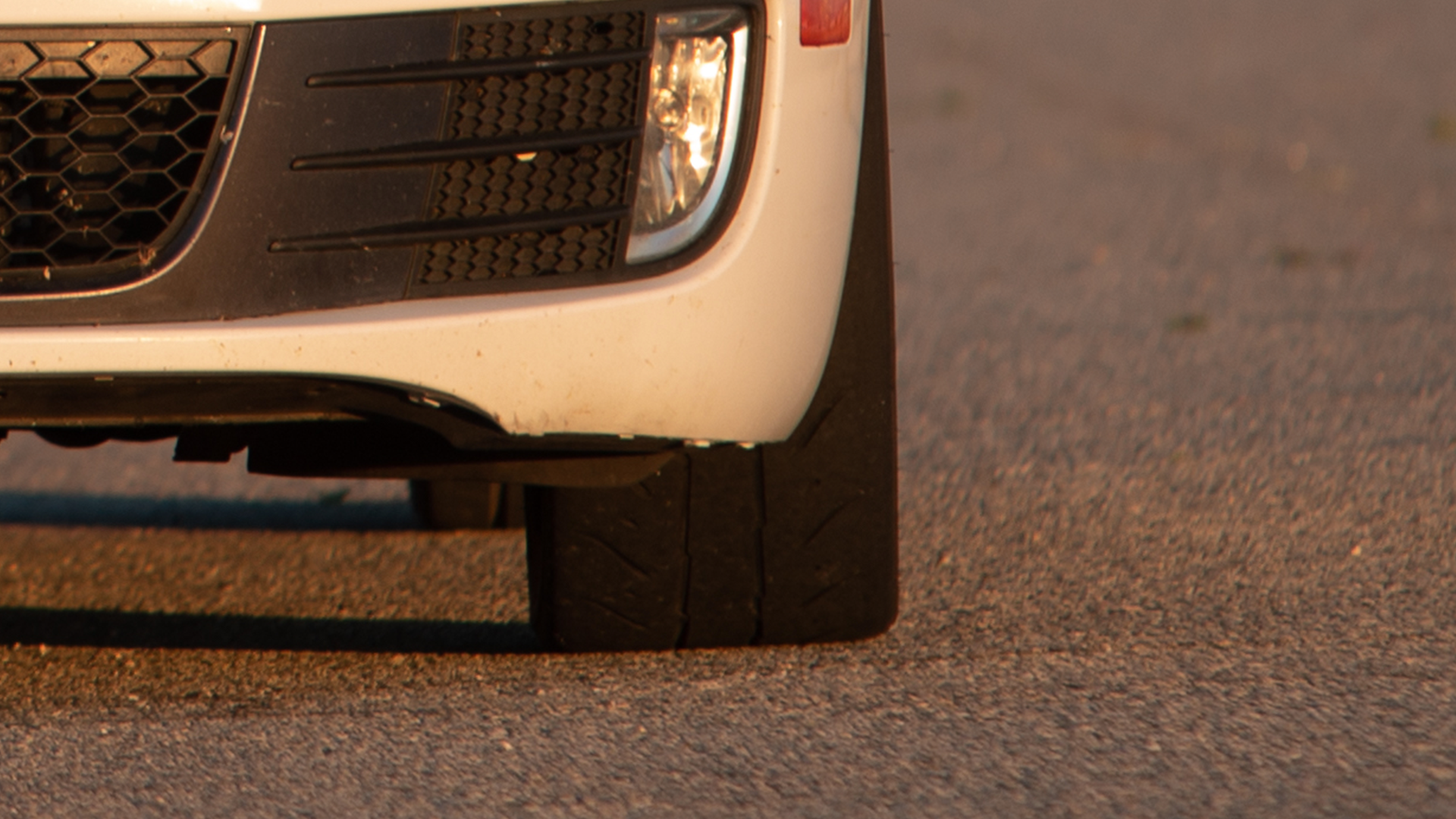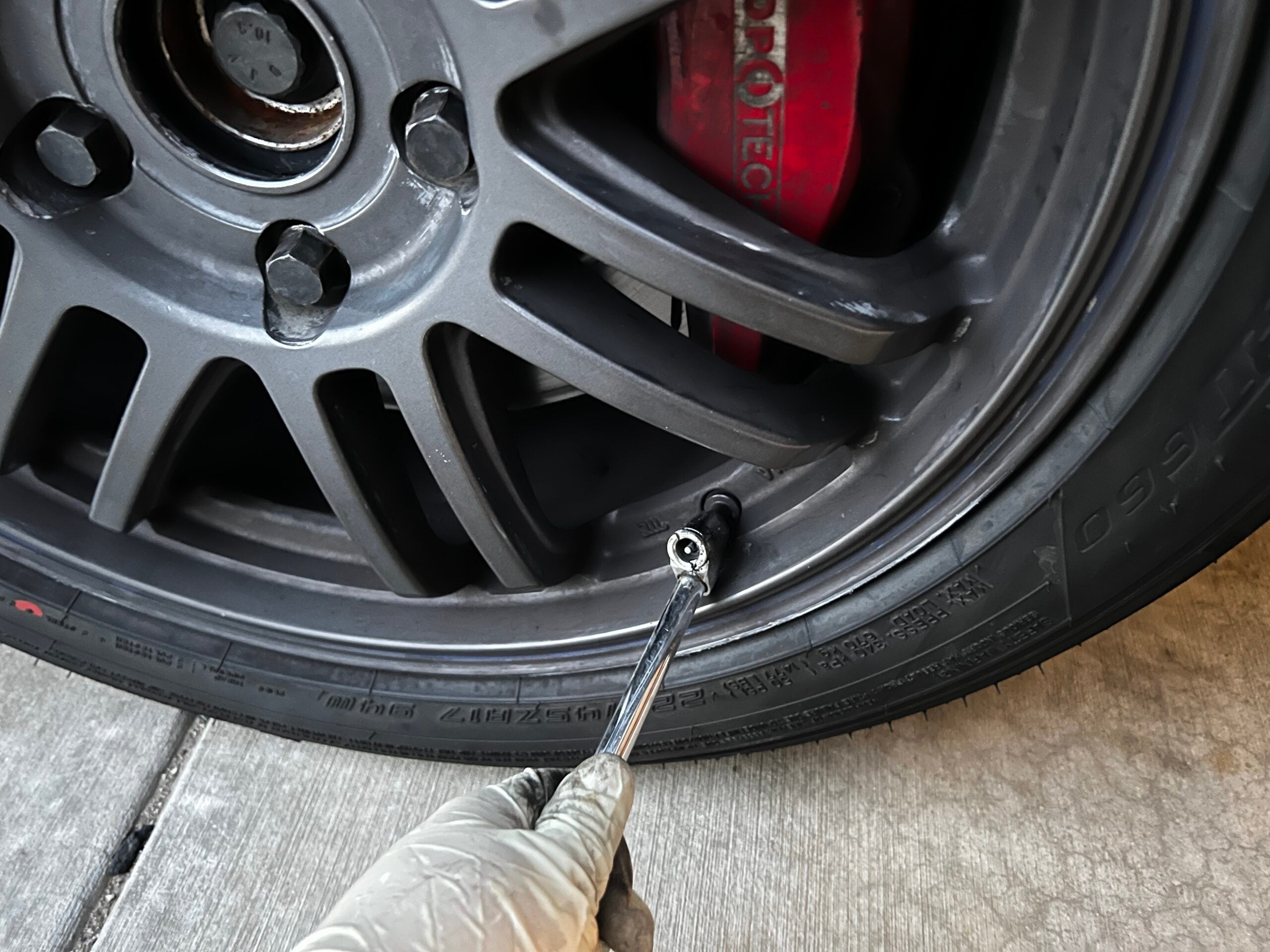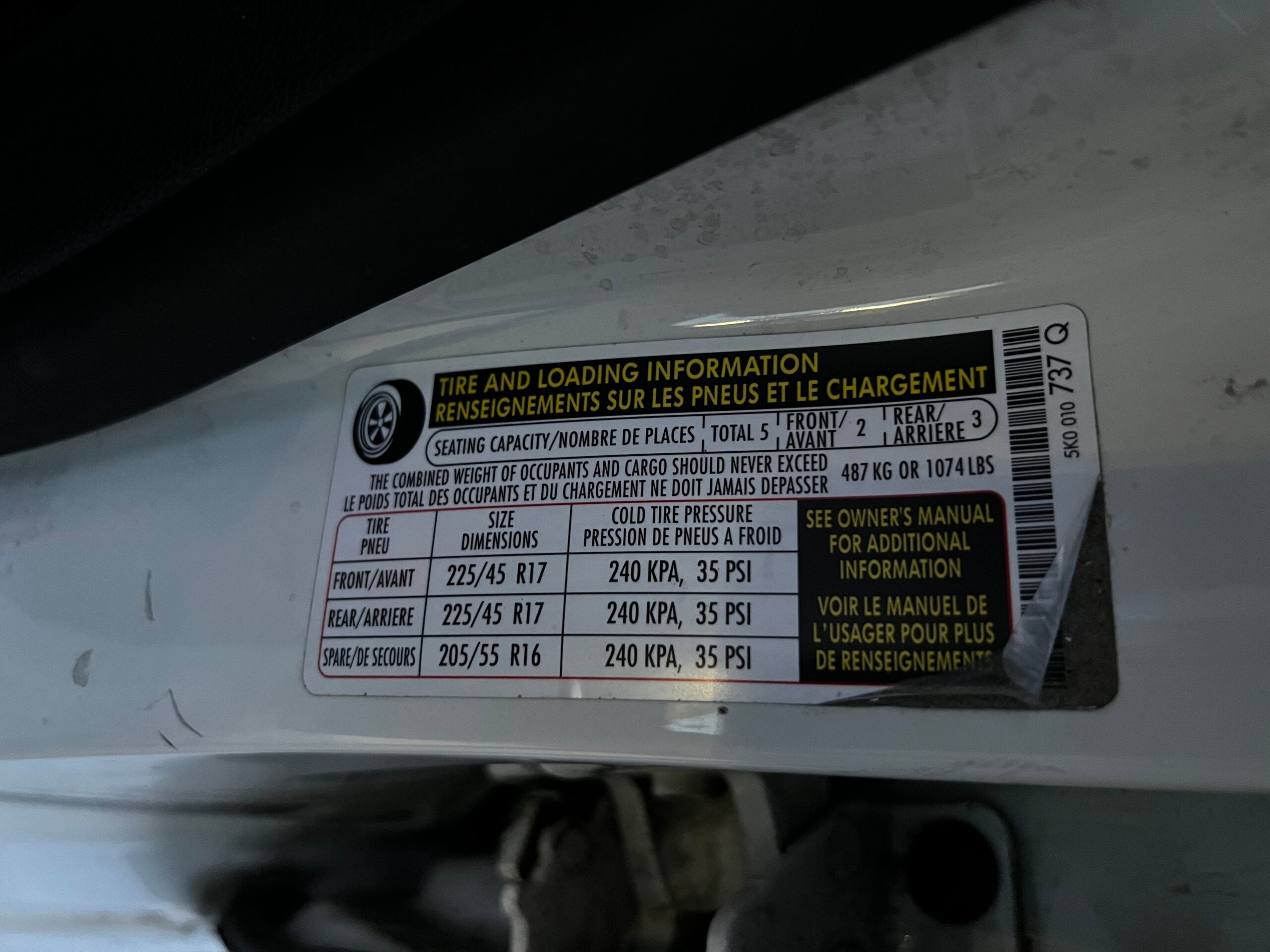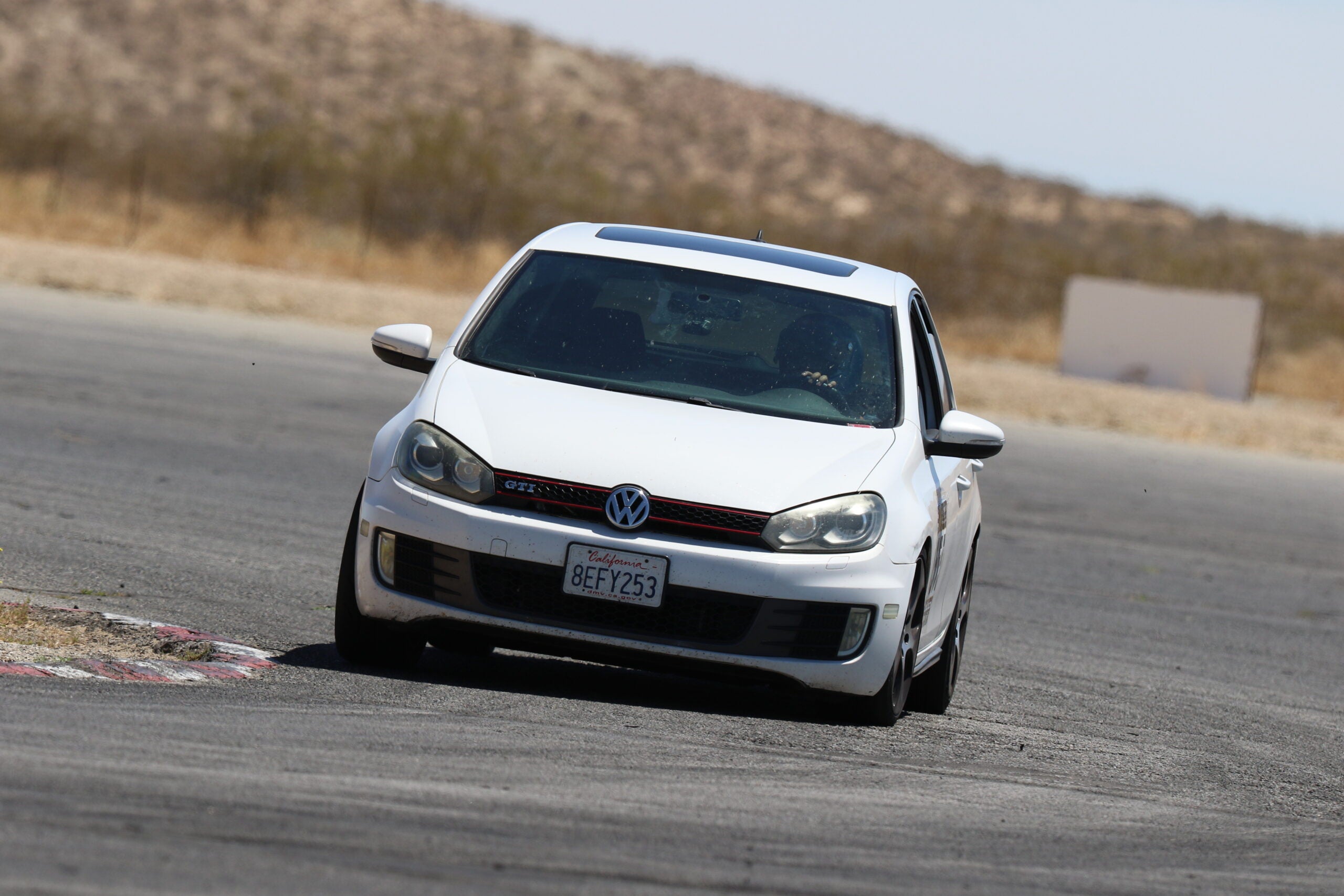Almost everyone I speak to, save for the most rubber-encrusted track rats, all forget that there is an incredibly simple, virtually free way to tune understeer and oversteer on any car. It isn’t suspension, alignment, or even driving technique. It’s as easy as learning about tire pressure.
Tire pressure is so basic, and yet most drivers often overlook regular tire maintenance, let alone think of it as a tuning point. For track days, it is essential, but some of the fundamentals are forgotten. Tuning tire pressure, in my opinion, isn’t so much about tuning sidewall flex as it is tuning feel and grip, as well as learning what I desire from the tire.

Plenty of folks will do a track session or a canyon run and check tire pressures when the tires are hot – the only relevant metric for performance driving. Cold pressure is only a starting point, and hot pressure is where all of the tuning is done. I will temper this by saying there is something a little, erm, lame about tuning tire pressures for the street.
I don’t continue checking my pressures once I have a happy setup. If it makes you feel better, think of this hypothetical on the track. Frankly, there should be two different setups for road and track, as the demands are significantly different between the two. Just don’t be the BMW forum guy who crashes his car into a curb and blames miniscule tire pressure discrepancies instead of bad driving. Either way, we’re venturing into my favorite territory of feel over absolute grip.
Tire pressure is something of a black art in abstract terms. It is just as deep and rich as roll center or sway bars, but much less easy to understand because of the highly specific nature of tires. Every single tire manufacturer and model has proprietary engineering that has hundreds of parameters. No two tires are ever the same in construction or compound. Tire construction is the part that makes tuning tire pressure less of a math problem and more of a practical issue. But on any tire, pressure affects contact patch size, sidewall stiffness, and the slip-angle tolerance of the tire.
Slip angle is not drift angle. Slip angle is simply the effective flex of the tire under cornering load, more specifically the difference between steering angle and the direction of travel on a given tire. Pressure tuning can influence this greatly. Sidewall stiffness is a major consideration as well, as that drastically changes steering feel and limit characteristics of the tire. The goal is almost always a more progressive breakaway at the limit, and it all starts with tires.
That’s all to say that I don’t have a good baseline figure for everybody, every car, and every tire. All tires act differently, and finding a starting point takes some trial and error. I tend to start with a 30 psi cold pressure, though your experience may vary. This is also on a conventional front-engined car. Rear-engined and mid-engined cars will take staggered tire pressures because of their weight balance and tire setups. When all else fails, start at the factory pressure and decrease it from there.
Much like sway bars, the most important part of tuning balance with tire pressure is the relationship across the tires instead of just having a set tire pressure figure that is treated as gospel. In fact, it’s important to not sweat the math so much and just tinker until things feel right, especially for folks who aren’t trying to set the world alight with lap times.
There is also the business of tire pressures working somewhat counterintuitively. Sometimes, a higher tire pressure increases grip and other times it does the opposite. It’s all about finding a suitable window where the tires want to work. Luckily, tires are incredibly sensitive to pressure changes. A single psi makes a big difference, so tuning tires can be quick and easy. All that needs to be done is letting pressure out in precise increments.

I like to start by letting some air out of the front tires to feel how they react. If I’m at a track day, I let out a pound at a time until I feel there is diminishing returns or negative results like understeer or imprecise steering. There is a threshold, and some of the goal of pressure tuning is having as little hot tire pressure as possible while maintaining good grip, feel, and wear. But only mess with one axle at a time. If there isn’t much of a difference, I re-baseline the pressures and start messing with the rear.
According to this engineering journal, having lower rear tire pressure is beneficial to handling because it allows a progressive breakaway and a softer sidewall, allowing for some rotation and sensation of rotation. This theory is bang solid in my book and has worked well for me. I run my rears a pound or two less than my fronts at times, but I also run a staggered compound for extra hectic handling. Either way, I start messing with the rear much in the same way as the front until I discern whether it likes the settings or not.
Doing it this way allows me to see how the car handles with a pressure offset toward the front and back, as well as even pressures all around. The car felt different on all three setups, and I found a path to take that I like.

You might ask about increasing pressures above the factory recommended. In my experience, this has never panned out well. I’ve tried it, and my car just felt like garbage. I almost want to tell everyone to start at the factory settings and work down, though I’ve found that race alignment shops will often have helpful specs to start from that deviate from factory settings. That’s how I got started.
From what I understand, tire pressure tuning can kill understeer on mid-engined and rear-engined cars more effectively than front-engined cars. I don’t have hands-on experience with such wealth, but my friends attest to it. Also consider that automakers do everything possible to make a car safer for the consumer, even performance cars. Tire pressure is one of the tools deployed by engineers to make cars more inert. There is always a pressure setting that makes the car more neutral. If taken to the extreme, the car can become an oversteer monster. Autocross folks sometimes pump rear tires up to 40 psi for maximum oversteer balance.
Ultimately, it’s all up to the car, the day, the driver, and the road or track. I say it often and it never gets old: Go out there and tinker. This is free, easy, and may have a shockingly good effect on any car.









